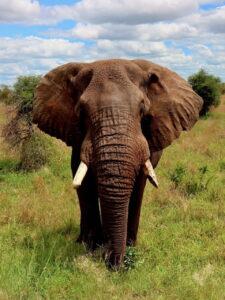The Giants Among Us: Understanding Elephant Population Dynamics
Elephants, the world’s largest land mammals, are not just icons of the wild—they’re also powerful indicators of the health of Africa’s ecosystems. Their numbers rise and fall in response to a complex web of ecological, social, and human factors. Understanding elephant population dynamics helps conservationists strike a delicate balance between protecting these majestic animals and maintaining the integrity of the landscapes they roam.

A Historical Overview: From Decline to Recovery—and Beyond
In the early 20th century, African elephants faced near-catastrophic declines due to relentless ivory hunting and habitat loss. By the 1980s, poaching had driven their numbers to critical lows across much of the continent. However, strong conservation efforts, anti-poaching laws, and the establishment of protected areas led to a remarkable rebound in certain regions.
For instance, Kruger National Park in South Africa saw elephant numbers grow from fewer than 100 individuals in the early 1900s to over 31,000 by 2020. Similar recoveries have occurred in parts of Botswana, Zimbabwe, and Namibia—though not all regions have shared this success. In Central and West Africa, forest elephant populations continue to decline due to poaching and deforestation.
Birth, Death, and Migration: The Building Blocks of Population Change
Elephant population dynamics are shaped by the balance between birth rates, mortality rates, and movement.
- Birth Rates:
Female elephants reach sexual maturity around 10–14 years of age and typically give birth once every 4–6 years, after a 22-month gestation—the longest of any land animal. Under ideal conditions, a stable elephant population can grow at about 4–6% annually. - Mortality Rates:
Calves are most vulnerable to predation and drought, while adults are more threatened by human conflict and poaching. Old elephants often die of starvation when their last molars wear out—a natural but sobering end in the wild. - Migration and Dispersal:
Elephants are highly mobile. They migrate across vast landscapes in search of food and water, often crossing national borders. These movements help maintain genetic diversity and allow populations to recolonize areas, but they also create challenges for management when elephants move into agricultural or human-dominated zones.
Carrying Capacity: When Numbers Become Too High
The carrying capacity of an ecosystem is the number of elephants it can sustain without irreversible damage. In Kruger National Park, debates have long swirled around this issue. Too many elephants can strip vegetation, damage tree cover, and alter entire ecosystems, affecting other species like giraffes, antelope, and birds.
In the 1960s–1990s, Kruger managed elephant numbers through controversial culling programs to maintain the population at around 7,000. After culling was stopped in 1994, numbers grew rapidly, prompting concerns about habitat degradation. Today, the focus has shifted toward landscape-scale management—allowing elephants to move more freely through transfrontier conservation areas that connect parks across borders, thus spreading ecological pressure.
The Human Factor: Conflict and Coexistence
As human populations expand, elephants increasingly compete with people for space, water, and crops. In many parts of Africa, human-elephant conflict has become one of the most significant conservation challenges. A single herd can destroy a farmer’s livelihood overnight, leading to retaliatory killings and resentment toward conservation efforts.
Community-based conservation initiatives—like those in Namibia and Kenya—are helping to change this dynamic. By ensuring that local people benefit economically from wildlife through tourism and compensation schemes, coexistence becomes possible.
Climate Change and Future Uncertainty
Rising temperatures and shifting rainfall patterns are altering the availability of food and water across elephant habitats. Droughts can lead to higher mortality, while changes in vegetation composition affect elephants’ food sources. Climate change also compounds human pressures, as both people and elephants compete for shrinking natural resources.
To safeguard elephant populations, conservation must consider connectivity, ensuring that elephants can move across landscapes as conditions change. Technologies like GPS tracking and AI-based monitoring are now vital tools for predicting movements and managing human-wildlife interactions.
Toward a Sustainable Future
Elephant population dynamics are not just about numbers—they’re about balance. Too few, and ecosystems lose a keystone species; too many, and landscapes suffer ecological strain. Successful elephant management requires a blend of science, compassion, and local participation.
Ultimately, the fate of elephants depends on our ability to manage space, not just species. Protecting corridors, reducing conflict, and ensuring that elephants can live alongside people will determine whether these giants continue to thrive—or become symbols of what we failed to preserve.
Conclusion
The story of elephants is one of resilience and complexity. Their populations rise and fall like the tides of the African savanna—shaped by nature, human influence, and time. Understanding their population dynamics reminds us that conservation is never static. It is a living, evolving commitment to harmony between humans and the wild.

